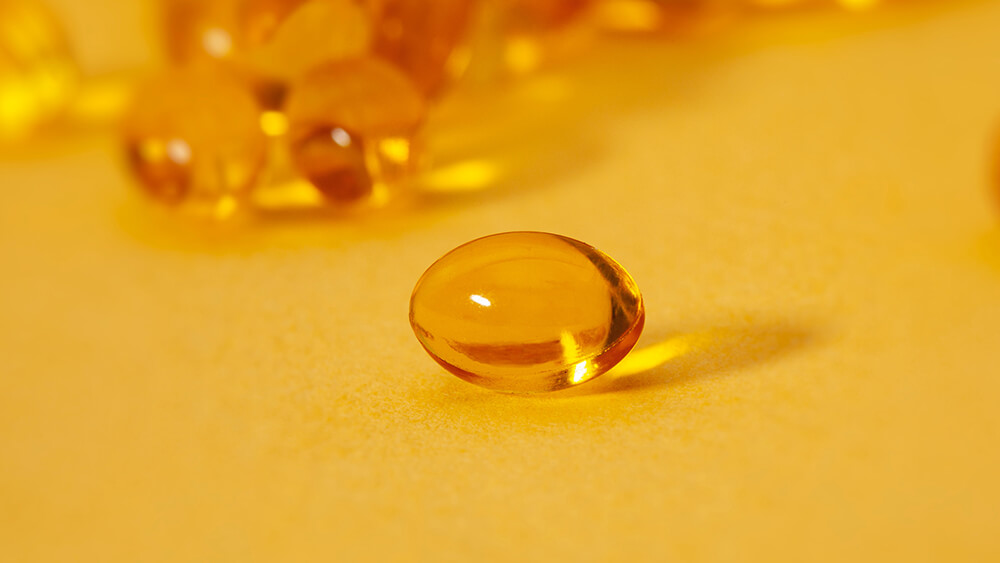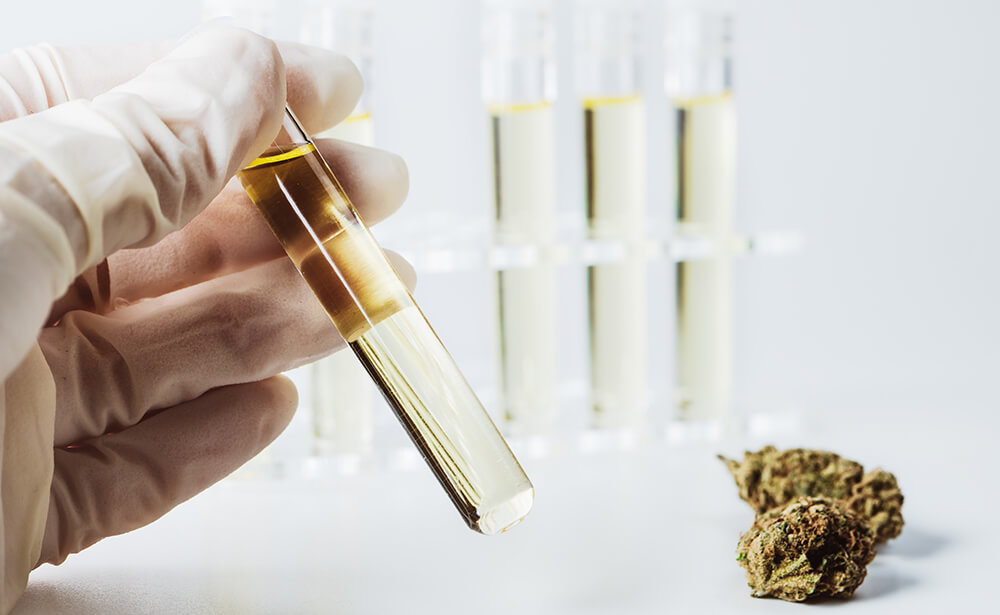A podcast with Dr. Staci Gruber
I listened to a podcast recently that featured cannabis expert, Dr Staci Gruber, and wanted to share some of the invaluable information that was highlighted on the program.
But first, who is Dr Staci Gruber?
If you’re interested in CBD then you need to know this name.
Dr Staci Gruber Ph.D. is currently conducting the first ever clinical trial into using CBD for anxiety and has also won FDA approval to study patients with chronic pain in the near future. One day, she will have proved instrumental in helping to provide scientific proof that CBD effectively alleviates symptoms of anxiety and pain in humans.
Staci is an associate professor of psychiatry and the director of the Cognitive and Clinical Neuroimaging Core at McLean Hospital (part of Harvard Medical School), where she’s headed up a lot of interesting research about the effects of cannabis and the brain.
Dr Gruber’s current clinical trial patients suffer from moderate to severe anxiety and they are testing a custom formulation of whole-plant-derived, high-CBD tincture. Results at this stage are preliminary, but so far, Staci and the team are excited to report that they are witnessing significant improvements in anxiety-related symptoms and that the product appears to be safe and well-tolerated.
5 essential tips from a Harvard cannabis expert
CBD is literally everywhere these days, from health food stores to the local gas station, as well as being added to pretty much every product you can imagine too.
Dr Gruber points out that CBD potentially has the power to change your life, but not all CBD products are created equally, which is why it’s so important for CBD customers to educate themselves on how to spot a good CBD product over a bad one.
Rather than shop by price or convenience, it’s essential that you pay attention to the product’s source. Here are five tips on buying CBD and getting the dosage right, from CBD expert, Dr Staci Gruber.
1. Be aware and ask questions
The lack of regulation in the market can make customers wary but there are thousands of great products out there, you just have to arm yourself with a little bit of knowledge so that you can spot them.
In particular, ask questions about the extraction techniques used and where the hemp plants were grown. Hemp is a great bioremediation tool as it soaks up everything from its environment, making it vital that it’s grown on clean, arable land.
A good company will be transparent about their sources and practices and should readily be able to provide this kind of information.
This kind of information is often easier to find online and you have the benefit of being able to buy your CBD directly from the supplier, but if you don’t like shopping online, then take a picture of the CBD you’re thinking about getting and do some research before making the investment.

2. Know your product
Make sure you know what you are actually buying. If the product is in any way ambiguous, then avoid it, as transparency and honesty are key in this market. For example, it’s illegal to sell CBD on Amazon and for this reason you’ll see products that say “hemp oil 500mg”, without saying what it contains 500mg of.
For some companies it’s a good way of flying under Amazon’s radar to reach more customers, but for others it’s an easy way to sell fake products by misleading people about what’s in them.
You should also check if the product is full spectrum hemp extract, broad spectrum, or an isolate. If the product is full-spectrum then it will contain a whole-plant extract (similar to what Dr Gruber is using in her studies) that includes many different cannabinoids, terpenes, flavonoids, and other plant compounds that help compliment the effectiveness of the CBD.
Benefits of full-spectrum and broad-spectrum CBD
Staci points out that there are over 400 constituents of the cannabis plant and some of the minor cannabinoids, including CBC, CBG, CBN, and CBDV, possess their own exciting potential for treating various conditions.
Hemp-derived, full-spectrum products will also include up to 0.3% THC and while you’re unlikely to feel any sort of intoxication from taking even a large dose of full-spectrum CBD oil, a broad-spectrum product may be preferred if you want to avoid THC altogether.
A broad-spectrum product will contain most of the plant’s natural compounds, but without the trace THC. Scientific evidence suggests that CBD and THC help boost each other’s effects, but if you don’t feel comfortable taking it then this type of broad-spectrum product will be better for you.
Pure CBD isolate
An isolate product will contain pure CBD that has been isolated from all of the other compounds. Scientists commonly use pure CBD for their experiments, as it’s the only way to know for sure that it’s the CBD that’s conferring the effects in question.
However, it’s been proven time and time again that CBD is more effective when administered as a whole-plant extract and that much lower doses are needed to achieve the same results seen in studies using high-dose, pure CBD.

3. Demand certificates of analysis
Amongst all of the great CBD products out there, there are also some really bad ones. Staci and her team have tested a lot of products on the market (that have been brought in by patients over the years), and found some of them to have a lot less CBD than advertised on the label.
It concerns Staci that some of her clients have saved up and, in some cases, gone without other things, so that they can afford a bottle of CBD oil, only to find out that it had virtually no CBD in it.
“They wonder why they’re not necessarily “feeling” something. That’s because instead of 25 milligrams per serving, they’re getting two or one perhaps.”
Not only is this an incredible waste of money, but it could also result in someone thinking that CBD doesn’t work for them, when it actually has the potential to change their life.
Staci’s also seen some products that contain a lot more CBD than advertised. Some of you may be thinking that getting more is a bonus, but think of how much of a problem this is when it comes to working out accurate and consistent dosing.
Staci makes a very good point when she says that people want to use CBD like they would a medication, which means they need to find a reliable source that can provide you with consistently dosed products.
The lack of regulation in the industry not only means you run the risk of a product with no CBD in it, but worse still she says, you might end up with a contaminated product.
Staci said “if the price looks too good to be true, then it probably is”.
Older people are particularly vulnerable to the industry’s lack of regulation as not only are the older generations more likely to gravitate towards edible products, but their decreased metabolism will also lead to the contaminants staying in their system for much longer.
Luckily, there is a way you can check exactly what is in a product by demanding to see a certificate of analysis (CoA) before making your purchase.
Different types of CoA
A certificate of analysis is exactly as it sounds, a certificate that shows you exactly what’s in the product, having been tested and analysed by a third-party laboratory.
Reputable CBD companies will not only provide you with a certificate of analysis, but they’ll usually make it very easy for you to access it, by placing a QR code on the packaging or linking to it on their website.
Potency analysis
The certificate will, at the very least, prove the product’s potency, usually listing between 11 and 13 cannabinoids and how much of each was detected within the product.
Terpene analysis
Some companies will pay a little extra for a terpene analysis, which offers some valuable information to those who wish to delve deeper into the aromatherapy of the product. Staci says that beta-caryophyllene is prominent in strains that work well for seizures and myrcene is being seen a lot in pain formulas.
Safety analysis
The very best companies will also pay for their products to be tested for all manner of potential contaminants, despite organic farming methods and best practices, just to make sure that the product they’re selling to the public is safe for consumption.
A comprehensive certificate of analysis like this will verify that the product is free from heavy metals, pesticides, microbials, mycotoxins, and residual solvents.

4. When it comes to dosing, start low and go slow
Regarding dosing, Staci says “start low and go slow”. I’ve actually used those exact words myself across hundreds of different articles, along with about a million other people all over the internet. But that just goes to show how important slow and gradual dosing is, because everyone’s different and appears to respond to CBD differently.
Firstly, your ideal dose will depend on your initial reasons for taking CBD, including the type and severity of symptoms you want to alleviate. Secondly, factors like your age, weight, and metabolism will also influence how much CBD you need.
For example, if you just want to take the edge off, relieving minor anxiety symptoms, then you might find that a low dose of CBD works wonders for you. However, if you want to try using CBD to stop seizures, then you may find that you need a much higher dose.
A typical “lower” dose of CBD could be anywhere between 10-15mg and go up to and beyond 60mg. As Staci points out, start low as you can always take more, but you can’t take less.
I’d also like to add, why take more CBD than you need to? You may find a lower dose of 10mg to be just as effective as a 25mg gummy, and you’ll save yourself tons of money in the long run by knowing this early on, which is another reason for starting your dose low.
You also need to be careful not to increase your dose too quickly as you need to wait a little while before you feel the effects from CBD.
CBD’s effects tend to be very subtle and while vaping CBD can work very quickly to alleviate mild symptoms of anxiety, it’s unlikely to solve chronic pain or depression overnight.
If you are suffering from a major imbalance in your endocannabinoid system, then you need to accept that it may take a few weeks of consistent dosing for the CBD to get into your system, start affecting change, and (hopefully) restore balance.
Delivery method
Staci points out here that some CBD delivery methods take longer to affect you than others and other factors can also influence the strength and timing of the effects you feel.
For example, effects will take longer to come on for people that are older and/or have slower metabolisms, as well as for anyone choosing to take their CBD orally as an edible. Younger people with faster metabolisms will feel effects more quickly and you’ll also achieve a faster effect by taking your CBD by inhalation or by dosing sublingually.
On the subject of sublingual dosing, Staci recommends holding the tincture or oil under your tongue for 1.5 to 2 full minutes, which is a lot longer than most people recommend. The reasoning behind this is that the longer you hold it in place for, the more CBD can enter your bloodstream directly, via the capillaries under your tongue.

5. Be honest with your healthcare provider
Finally, Staci talks about how important it is to be honest with your physician about your decision to take CBD as it has been found to alter the way your body processes other medications.
CBD has been shown to inadvertently raise the levels of some other medications you take (blood thinners, for example), in a similar way that a grapefruit would.
It goes without saying that if your doctor has warned you off eating grapefruit while you’re taking a specific medication, then you will need their advice before moving forward with CBD.
Summary
I think it’s incredible that both Dr Staci Gruber and Dr Mitch Earleywine (the host) took the time to make this podcast, especially when you consider how busy they must be with research, teaching, and other general life stuff.
Driving cannabinoid research forward is one thing, but it’s nice to see them also dedicating time to educate potential CBD users in buying CBD that will prove to be both effective and safe.
Staci says “buyers, don’t beware, BE AWARE”. Make sure you know exactly what you’re buying and demand certificates of analysis before buying your CBD products. Due to the regulatory limitations surrounding the CBD market at the moment, she stresses how important it is for customers to stay educated and invested in their own treatment.
If you’d like to listen to the podcast for yourself, visit cannabisradio.com.
